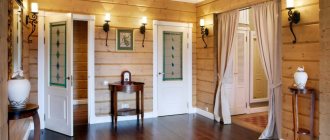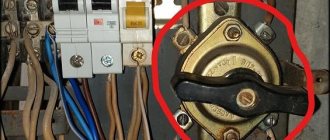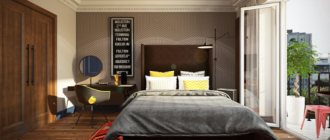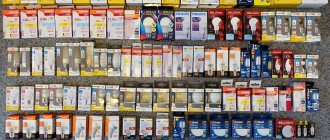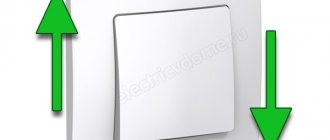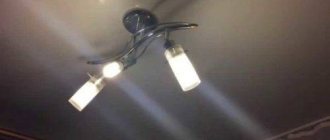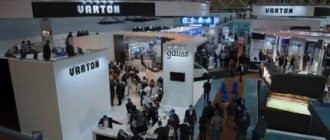The light in the apartment affects how productively we work, how well we sleep and whether we eat tasty. SNiPs have recommendations for lighting in residential spaces, but the information there is very conditional - it does not take into account the size of the room, the height of the ceilings and the color of the walls. On the one hand, when selecting lamps it is better to focus on your feelings, however, there are general patterns that are dictated by the physics and physiology of our perception of light. The Village learned from Natalia and Valery Ipatov, lighting designers of the Lux NV Art studio, how to properly organize lighting in different areas of the apartment.
Text
Olga Danilkina
maybe in the living room?
This is the most unlimited fantasy room - it depends more than others on your specific needs. What are you going to do here? Receive guests, read, watch TV, play with children? In the living room you can and should experiment and create several levels of lighting for different tasks and in accordance with the needs of each family member.
Lighting levels both in the living room and in any other room can be divided into the following groups:
The central light in the form of a chandelier or several lamps (this depends on the parameters of the room) is responsible for uniform lighting, which is needed when you are cleaning or receiving guests: all parts of the room should be clearly visible.
Zoning lighting, or local light - for example, in the sofa area. This includes floor lamps or sconces; this light gives the room coziness.
Accent light: illumination of paintings, decorative lamps, garlands, luminous art objects.
Spectacular lighting for a party or other rarely used scenarios, which are developed based on the wishes of the customer.
Conclusion
Any advice on lighting a room, without a detailed floor plan, furniture arrangement and color design, is doomed to failure. Therefore, in our article we only outlined the basic requirements and focused your attention on important aspects.
At the same time, if you draw up a floor plan, right down to arranging books on shelves, then the most correct and convenient lighting system will be clearly visible. The main thing is not to overdo it with decorative elements. After all, everything in lighting should be in moderation.
Is it better to use cold light?
In the work area (at the desk or in the office), it is important for us to be active, feel cheerful and focused. The temperature of the light can help with this: warm light relaxes us, and cold light invigorates us. Therefore, in the work area it is better to install light bulbs with a temperature of 4,000–5,000 K - these are also installed in offices.
If you work with color (for example, design), then, among other things, accurate color rendition is important to you. For domestic use, this indicator must be at least 80 Ra/CRI. Ideally, 95 Ra/CRI, but few manufacturers are currently producing such lamps.
In addition, for any work, the light should be uniform and diffused, and shadows should be kept to a minimum. The golden rule from childhood works here: “If you write with your right hand, then the light should come slightly to the left.” It is better that there are no glare effects at all in the work area: they will tire the eyes, which means that you need to be careful with glossy surfaces and adjust the height of the light to a comfortable level.
Connection via switch
When connecting an emergency lamp through a separate switch device, the question often arises of how the equipment will go into special mode if the switch is turned off.
All working emergency lighting, even when switches are installed, is connected to the panel by a separate cable line. A special relay monitors the voltage not in the switching device, but in the switchboard. As a result, if there is a loss of voltage in the panel, a signal is sent to the lighting device to switch to battery operation.
Thus, even with the switch in the “OFF” position, the lamp will still function in an emergency situation.
The set of rules recommends providing additional power to this type of lighting from an alternative source, in other words, not from one panel, but from two. Then, in the event of an accident, the first switch occurs to the spare panel, and in case of failure, to the batteries.
Does the food look more appetizing?
In terms of lighting rules, the working surface in the kitchen is approximately the same as the work area: the color must be conveyed as accurately as possible so that the products look natural and appetizing. Therefore, we follow the same rule: we choose lamps with an indicator of at least 80 Ra/CRI. Another thing is the temperature of the light: the colder the light, the more unattractive the food looks. So, under a 6,000 K light bulb, the products will have a bluish tint. It is optimal to keep the temperature at 2,700–3,000 K - this is natural light.
A common mistake in arranging lighting in the kitchen is to place the light source on the ceiling so that the person cooking is directly below or in front of it. This leads to chiaroscuro, which makes it difficult for you to clearly see what you're cooking. This can be corrected by installing additional light under the cabinets and illuminating the work surface.
Apartment lighting devices
Spotlights
The most popular solution, especially for suspended and plasterboard ceilings. Lighting equipment is compact and versatile in use. The housings of the lamps are either completely hidden behind the ceiling (recessed) or located outside (overhead). Point light emitters are placed over the entire surface of the ceiling: single and double lines, groups, along the ceiling perimeter. Using several LED illuminators allows you to limit the brightness of each to 400-500 Lumens. Main lighting requires a luminous flux dispersion angle of 110-300 degrees, and local illumination - 40-90 degrees.
Track spotlights
Used for local, accent and decorative lighting of room areas and interior details. Low-voltage magnetic tracking systems are installed in apartments. They can be installed on all types of ceilings and walls. Equipment Features:
- free movement of lamps along the track, their rotation to concentrate light at any point in space;
- issuing a narrowly directed light cone formed by a secondary optical system (reflector, reflector).
Pendant lamps
This lighting equipment is only suitable for rooms with a height of at least 270 cm. In a low room they do not look very aesthetically pleasing, losing out, for example, to overhead models. There are many types of pendant lighting fixtures: point, track, spots. You can choose the best option for a room, hallway, corridor, bathroom.
Hidden light
It is a fashionable lighting design trend that is actively used in modern lighting projects. The idea is to install lamps that are discreet or inconspicuous against the background of the ceiling and walls. Only the light emitted by them is visible, fulfilling the design task assigned to it. Implementation options:
- recessed lamps;
- LED strip in the ceiling space, under-ceiling decorative cornice, plastic translucent plinth.
String lamps
An original system with lighting fixtures located on two stretched strings, combining the functions of power fittings and power supply conductor. Via insulated cables, the illuminators receive a supply voltage of 12 Volts, which comes from an external power supply. The luminaires can be easily moved along the string guides, as well as rotated to the required angle.
Light lines and profile systems
LED profile systems are a new development used to create light lines. The profile is mounted flush into tension and plasterboard ceilings, as well as inside grooves in a concrete ceiling.
The light source is an LED strip glued to the profile wall. The front side of the profile rail is covered with a light-diffusing screen, forming a bright and uniform light strip.
The profiles fit perfectly in any position, making it possible to create a variety of geometric configurations from lines of light.
What kind of lamp is needed for the bedroom?
Relaxation is important in the bedroom, and bright light interferes with the production of melatonin, the sleep hormone. Therefore, it is advisable to use dim lighting here: for example, the space of the bed can be outlined with soft LED lines. And you definitely shouldn’t install a ceiling chandelier above the bed - most likely, you will be uncomfortable not only from the light in your eyes, but also from the object hanging over you.
For those who like to read before bed, it is important to provide a spotlight with soft, diffused light. This could be a wall sconce or a light with a swivel effect to direct the light directly onto the book. The third level of light in the bedroom is the light near the mirror or dressing table.
In the bedroom and other areas where you spend the first hours after waking up (hallway and bathroom, for example), it is important to provide a level of soft orientation lighting that you turn on as soon as you wake up: harsh light when waking up causes stress. For orientation, paths in the aisles, to turn on which you can install a motion sensor, and night lights on bedside tables would be appropriate.
Regulatory documents and rules
The main document that all designers are guided by is SP (set of rules) 52.13330 of 2021. According to its content, emergency lighting includes evacuation and backup types.
The main task of the 1st category is to provide conditions for the emergency evacuation of people through corridors, exits, and staircases.
This in turn is divided into lighting:
- evacuation routes of ordinary buildings: entertainment and shopping centers, schools, hypermarkets, offices, cinemas;
- special danger zones in industrial workshops and large enterprises;
- anti-panic type, whose main task is to suppress panic and crush in crowded places.
Interesting! Backup lighting is installed in rooms where stopping the production process is dangerous to the life and health of people (surgical operating rooms, air traffic control rooms).
The design of any type of lighting is clearly regulated by federal laws, fire safety regulations, quality standards and sanitary norms. Designers are guided by the following list of documents:
- Federal Law No. 123;
- SP 31-110 from 2003;
- SP 3.13130 from 2009;
- SP 52.13330 from 2011;
- 13330 from 2021;
- PUE (electrical installation rules) – 7 dated 10/06/1999;
- GOST R IEC 605981-1 from 2003;
- GOST R50571.29 from 2009.
Separately for skyscrapers, the Russian Ministry of Emergency Situations has developed a list of recommendations for ensuring fire safety.
in the children's room?
The nursery requires one hundred percent attention to all key indicators, and the most important here is safety. Children should not be able to open the lamps themselves, so the lamps in the nursery should be as shock-resistant as possible. There are cases when anti-vandal lamps that are designed for street lighting are used in children's rooms: they are usually made of powerful fiberglass. In addition, in rooms for children it is better to use 12 or 24 volt lamps - in case the children get to the electrics.
In the nursery, it is worth providing several levels of lighting: children study, play, they need to read a fairy tale before bed. For example, uniform central light from the ceiling is needed so that the child can play calmly on the floor. If we are reading a book, we need a local floor lamp; if we are doing homework, we need local lighting for the table. For training, you need maximum color rendition, and to avoid getting tired, no glare effects. If children play video games, then the background light must work along with the TV, otherwise they will damage their eyes.
When children are very young, life is made easier by directional lights - track lights or night lights, so that you can easily see something in the room, but without waking the baby with bright light. For fun, you can make LED dual strips, where there is a colored and a white stripe: children love to play with the lights of different colors. However, they grow quickly, so it is better to approach such special effects and special children's lamp models wisely.
Color, sizes, quantity and types of signs
Evacuation pictograms, whose task is to indicate direction, must be on a green background. The minimum brightness value corresponds to 2 cd/m². This requirement applies to premises equipped with smoke removal systems (hoods).
In their absence, the brightness value increases to 10 candelas per m². In a number of cases, manufacturers violate the requirements by making the background dark and the figure in the center of the icon not contrasting enough.
It is also necessary to remember that the installation height of the pointer is directly related to the distance of its identification. This value is calculated using the formula:
Accordingly, the discrimination distance is found from the product of the height of the sign (in meters) by a factor of 200 or 100.
The number of signs installed depends on the length of the corridor. The average distance between pictograms is no more than 25 meters, and they must additionally be mounted in transitions and at turns.
The right light for small spaces: bathroom, vanity and dressing room
In these zones, color rendering is most important: here we look at ourselves, apply makeup, and select clothes. This is the same minimum of 80 Ra/CRI for a light bulb. For the same reason, the location of the light near the mirror is important. The most serious mistakes are the light that appears behind the person and creates chiaroscuro, as well as the light reflected in the mirror - it blinds. A good example for installing light near a mirror is a dressing room: lamps are located around the perimeter of the mirror or on the sides, and not just above or, especially, below. Lamps should be frosted to create soft diffused light. It is important to take into account the height of family members in order to install lamps at approximately eye level - for this purpose, make several levels of lighting.
A special parameter for a bathroom is the degree of moisture protection. The optimal rating is from IP 44 to IP 55. Although manufacturers have recently begun to make chandeliers that are safe for bathtubs, they are not recommended because they can quickly break. Even if you don’t splash water on it, there is condensation in the bathtub: it accumulates on the arms and can cause oxidation and rust to such an extent that you will not be able to unscrew the light bulbs from there, and the chandelier will have to be replaced.
Photos: cover – Andriy Bezuglov – stock.adobe.com, 1 – blackzheep – stock.adobe.com, 2 – Andrey Bandurenko – stock.adobe.com, 3 – hui_u – stock.adobe.com, 4 – kitthanes – stock. adobe.com, 5 – voobino – stock.adobe.com, 6 – ake1150 – stock.adobe.com
Testing and verification
The requirements for emergency lamps provide for a mechanism to verify their functionality. That is, the design of the devices must include an individual testing button or a special connector for connecting an operational testing device.
Testing is carried out by the chief power engineer once every 14 days. After which the test result is entered into the emergency lighting equipment logbook.
In the case of work in large buildings (shopping centers, industrial complexes), where it is not possible to test every lamp, testing is carried out in a group form.
To do this, a device is used that connects to a special cable line and projects a 12 V signal.
No more than 35 light points can be connected to this device at a time. By pressing the main button (top), all installations go into emergency mode. One of the inspectors holds the self-release button, and the second performs testing, identifying the operability of the devices and entering all the data into the log.
Flammability test
Resistance to high temperatures is one of the main requirements of GOST 60598. The housing of the lighting device must withstand temperatures of 850 °C. It must also be resistant to fire, that is, in the event of a fire, the housing will not support combustion and will not contribute to the spread of fire.
Important! Similar checks are carried out by the manufacturer during the equipment assembly process. The main attention is paid to ensuring that even when the body is melted, its molten composition does not contribute to the combustion of flammable materials.
